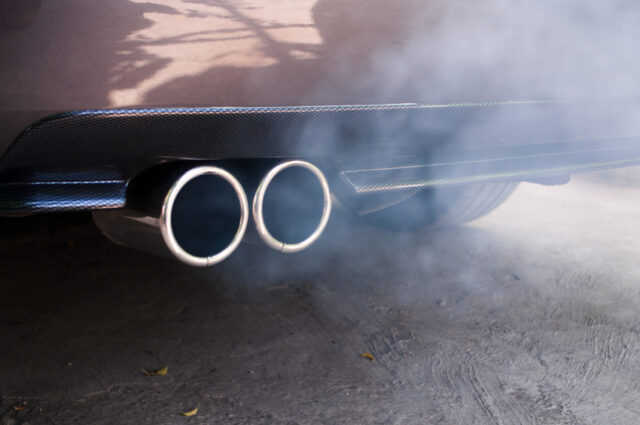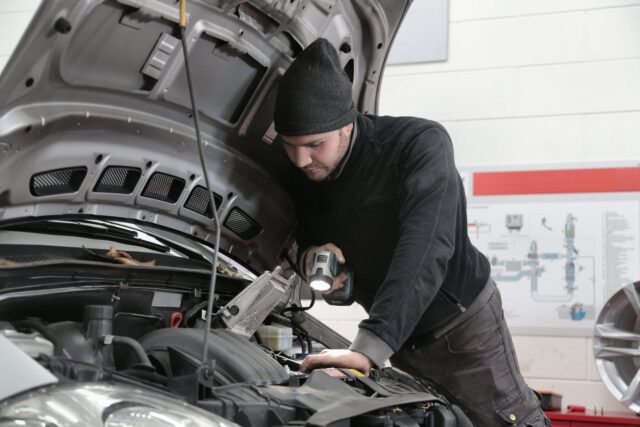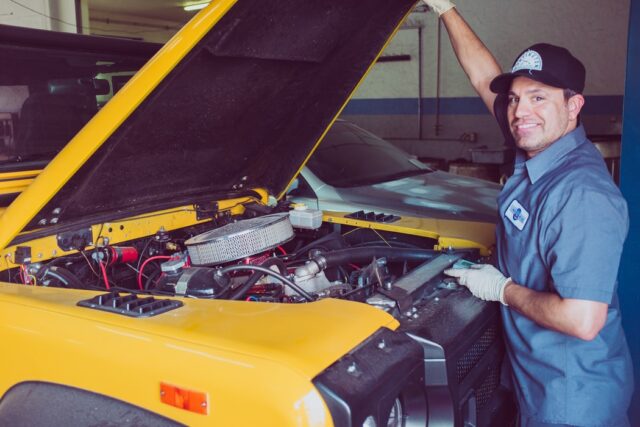DPF delete is the procedure of removing the diesel particulate filter from a diesel engine powered vehicle. Most vehicles that rely on diesel are generally heavy-duty commercial vehicles but can include passenger vehicle brands such as Volkswagen.
It is evident that a small fraction of prevention is worth its multiple of cure and this holds very true for diesel engine powered vehicles. In this article we explore the topic of DPF delete and mention its benefits (if any) and drawbacks.
What is Diesel?
Diesel is a liquid which is made from fractionally distilling petroleum fuel oil. It is the process of distillation that makes diesel a distinct fuel type. There are sub-types of diesel fuel such as biodiesel, BTL, GTL but petro-diesel which is standardized as ultra low sulfur diesel is the most common version. Ultra low sulfur diesel is what majority of diesel truck owners pump into their tanks when they’re at the fuel stop.
Ultra low sulfur diesel has a reduced sulfur content which was initiated as part of an emissions control campaign to make it both compatible with new emerging technologies and to lower the harmful toxins released from vehicle exhausts. The predecessor to USLD was low-sulfur diesel which has an estimated 97% higher sulfur content than ultra-low-sulfur diesel. Even though the sulfur content in LSD is relatively low, it became a mandate of the United States government in 2006 for highway-vehicles to strictly adhere to using only USLD. Locomotive and marine vehicles followed in 2007.
What is a Diesel Particulate Filter?

A diesel particulate filter is a device used to remove diesel particulate soot from the engine of a diesel-fueled vehicle. It works by trapping soot and harmful contaminants. Eventually, the soot in the DPF filter builds up and it requires cleaning. As a result, the DPF filter undergoes regeneration and the soot is burned-off via high temperature heat. There are many types of regeneration processes such as passive, active, and parked/forced. Regeneration is an important part of maintaining the DPF system on your vehicle because without it the DPF filter can become clogged enough that even cleaning it manually will not save its usefulness. The filter is very similar to a catalytic converter except for the fact that it is not a flow-through device.
Health Hazards of DPF Delete
There are many health hazards associated with DPF delete and most of them have to do with the substrates that the exhaust system of a diesel engine vehicle releases into the atmosphere. For people with respiratory problems such as asthma, bronchitis, and lung disease, it can aggravate the illness. Moreover, it can lead to respiratory illnesses in individuals that are already healthy because the pollutants that the vehicle’s release are free radicals and carcinogenic (cancer-causing) particles.
The Environmental Protection Agency (EPA) has identified three key pollutants found in diesel fuel burning vehicles which are nitrogen oxides, hydrocarbons, and carbon monoxide.
EPA Fines and Regulations
The Environmental Protection Agency is the government body responsible for setting out strict emissions standards for diesel engine vehicles. For several decades now, the EPA has been setting out regulations specific to auto vehicles in order to combat and control the pollution they emit into the atmosphere.
In 2007, the Environmental Protection Agency (EPA) established new, tougher emissions standards. New diesel engines had to emit fewer particulates and lower levels of nitrogen oxides in order to pass these stringent requirements. This expanded the emissions regulations established by the EPA in 2004.
These regulations are found in Section 203 of The Clean Air Act.
(3)(A) for any person to remove or render inoperative any device or element of design installed on or in a motor vehicle or motor vehicle engine in compliance with regulations under this subchapter prior to its sale and delivery to the ultimate purchaser, or for any person knowingly to remove or render inoperative any such device or element of design after such sale and delivery to the ultimate purchaser; …
The EPA fines associated for DPF removal are not standardized meaning they are dealt with on a individual case by case basis. Therefore, companies that are affluent and have a broader impact to harm the general health of the environment and public are dealt with harsher penalties than individuals that take their vehicles into a local mechanic shop to get a straight pipe retrofitted. We’d like to mention that straight-piping is another term used for DPF delete and it is simply the part that replaces the DPF filter system so that when exhaust air passes through it enters the atmosphere, without any filtering.
The fines of for DPF deleting can range from a couple thousand dollars for individuals to tens of thousands for small-medium companies participating in supply and retrofitting DPF delete systems.
Moreover, DPF systems are expensive to replace and cost between $2000-$10,000 for the entire aftermarket treatment device. If you can avoid it, we recommend you please don’t DPF delete and do your part in conserving the environment and the health of the general people.
What Can I Do to Prevent a DPF Delete?

Many vehicle owners across North America and even in Europe are fascinated with the idea of improving performance and fuel efficiency by straight-piping the DPF system on their vehicles. However, there are many drawbacks associated with mode of action because it can void the warranty on your truck so that when you take into your dealership, they will refuse to perform the repairs or worse may even file a report with the EPA.
One of the best ways to prevent DPF delete is to ensure that you regularly regenerate the diesel particulate filter on your vehicle. The process is very simple and all you need to know if how to activate the regeneration process which is usually a combination of pressing a few buttons and pressing the clutch depending on the type of vehicle you have.
Furthermore, we highly recommend you pick up two key pieces of equipment in your DPF maintenance journey. They are a diesel exhaust fluid refractometer and a DPF cleaner. Diesel exhaust fluid enters the engine system to work to control nitrogen oxide pollutants and ensuring that there is an accurate urea concentration will prevent breakdowns and hefty repair bills. A DEF refractometer works to let you know if your diesel exhaust fluid is good or needs replacement. Secondly, a DPF cleaner involves catalyst reactions and will help deteriorate the trapped soot inside the filter. DPF cleaners can also activate the regeneration process inside the filter.
Sustainability Energy supplies a DEF refractometer as part of its e-commerce platform to increasing sustainability. You can collect yours today at Amazon.com. The DEF refractometer arrives with a screwdriver to adjust the prism, an instructions manual, a carrying case, solution dropper, and the refractometer itself.
AUTOPROFI DPF Clean
Autoprofi DPF Clean is made in Germany and specially designed for vehicles that have a diesel particulate filter. It thoroughly cleans the filter and helps initiate the regeneration process. It has a TUV certification and retails for about $19 USD.
The Case with CAT

In response to the initial EPA ’04 regulations for on-highway trucks, Caterpillar developed a system known as Advanced Combustion Emissions Reduction Technology (ACERT). This system met the emissions standards through air management, highly controlled combustion, improved electronics and an after-treatment system. To meet the 2007 requirements, Caterpillar made further changes, including the addition of a Diesel Particulate Filter (DPF) with its own Cat Regeneration System (CRS). These changes led to significant problems that affect the people who rely on this technology in the field.
The new features added to the C13 and C15 engines from Caterpillar, following the introduction of 2007 EPA guidelines, have led to numerous problems. Increased repair time, wasted miles and unnecessary costs can all result. While the problems caused by the new engine configuration show up in a variety of ways, they share a similar cause.
Essentially, the Diesel Particulate Filter (DPF) collects the soot produced by burning diesel fuel. When the soot builds up, the Electronic Control Module starts the regeneration system, which burns up the soot and circulates the air back through the system. In some cases, this regeneration cycle is not triggered properly. This leads to computer errors causing the vehicle to shut down, clogged Aftertreatment Regeneration Device (ARD) heads, low back pressure leading to lack of proper filtration and fluid dilution, and other potential problems. When the Cat Regeneration System does not activate, the computer kills the engine.
The most common sign that the system is faulty is that the ARD head gets clogged. When that happens, the truck has to go into the shop, the ARD head must be removed and cleaned out or replaced, and the computer must be reset. Depending on whether you need a new part, and whether the nearest authorized service location has the part, you can lose significant time to this repair.
To separate itself from competitors in the race to maintain power and fuel economy while meeting stringent new emissions standards, Caterpillar designed an entirely new system that is used on its C13 and C15 engines. While other companies focused on cooling and re-circulating the exhaust back through the engine, Caterpillar attempted to meet emissions standards by changing the initial combustion profile and by dealing with particulates in a new way.
The Diesel Particulate Filter (DPF) collects particulate “soot” which must be burned away to keep the filter clean. An Electronic Control Module (ECM) is supposed to detect when soot has built up and initiate the regeneration cycle. This involves injecting a controlled amount of fuel into the system and burning off the soot. All of this is meant to happen automatically in order to save maintenance time.
While undoubtedly meeting EPA standards, the engines with this configuration have experienced numerous problems and cost the owners and operators of these trucks significant time and expense. In many cases, the ECM would fail to detect soot buildup and the truck would simply shut down. In other cases, clogged ARD (Aftertreatment Regeneration Device) heads would require frequent replacement. However the problems arise, Caterpillar should be held accountable for the defective design and the economic harm suffered by those who purchased vehicles with the 2007 and newer emissions packages.
In an effort to meet 2007 emissions regulations, Caterpillar added new features to its 2008 model trucks. One feature, the Cat Regeneration System (CRS) is designed to oxidize (burn) the soot that builds up in the Diesel Particulate Filter (DPS). An electronic control module is supposed to detect soot buildup and add a precise amount of fuel to oxidize the soot. Early engines with this package have experienced significant problems, leading to excessive down time, missed deadlines, tow costs, repair costs and a host of other negative consequences for their owners.
As is the case with this case study, it is evident that manufacturers including Ford Powerstroke and Cummins ISX had a difficult time in the early days of DPF filters and regeneration. However, you are not likely to see these issues in modern vehicle models because both manufacturers and vehicle owners have accepted the fact that the diesel particulate filter is part of doing business with fossil-fueled powered technology. It may be the case that the future will yield more energy efficient vehicles that are powered through renewable sources such as electricity (non-fossil fuel based) or that existing systems will improve altogether.
Conclusion

This article publication outlines the effects of deleting the DPF system on diesel powered vehicles. It mentions preliminary information to understand diesel fuel, filter systems, EPA fines for deleting emissions technology, solutions for maintaining the DPF, and a case study involving a manufacturer. If you found this article helpful and a deterrent in deleting the DPF, we feel you and us have done the task of preserving the environment and public human health.







